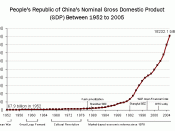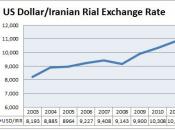On July 21st, China abandoned the 11 year old peg of it currency, the yuan, at 8.28 to the dollar and revalued its currency, the yuan, and linked it to a basket of currencies. The Chinese called the management approach a "managed floating exchange rate regime." The yuan's central rate against the dollar was shifted by 2.1% to 8.11. This illustrates China's move towards currency liberalization, and in this summary, I've briefly discussed some of the advantages and limitations of China's currency liberalization and economic reform.
China's industrial production and investment in fixed assets have both eased from their levels at the end of 2003, and it is also important to understand the composition that constitutes China's macroeconomic growth and the impact a change in such components can have on China's macroeconomic growth. Fixed investment is responsible for China's macroeconomic growth, and therefore, China's macroeconomic growth is especially vulnerable to any slowing of corporate investment or public spending in infrastructure.
With respect to investment cycles, profit margins, product prices and property prices that are used to forecast corporate cash flow or ability to borrow have all slowed down. While in 2003 and 2004 industrial production and sales grew at an annual rate of nearly 30% in real terms, in 2005 the pace slowed to approximately 15% with commodity prices high, companies' margins, thus, being squeezed. Property prices also moderated after a period of extraordinary growth.
China's government officials and policy makers also reacted in decisive and prudent ways to control growth and have resorted to market driven measures to control growth at sustainable levels. For instance, China increased interest rates (last October) to hold back money and credit growth and a stronger Yuan would perhaps give the economy another downward nudge. (At...


